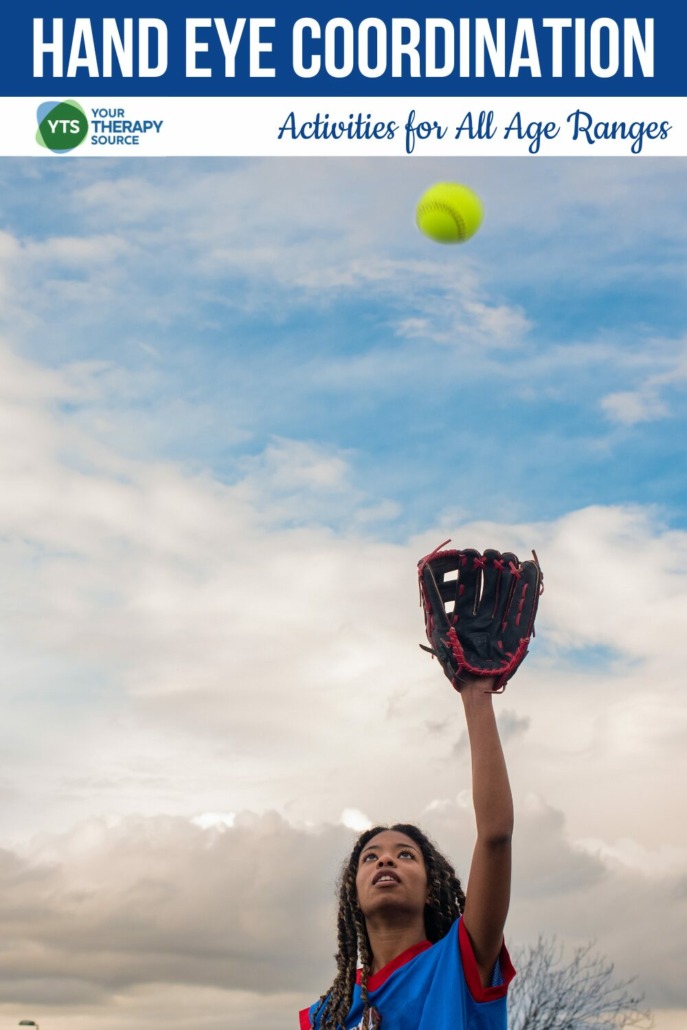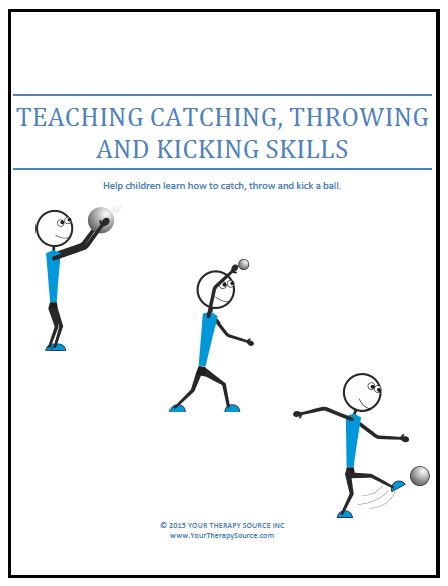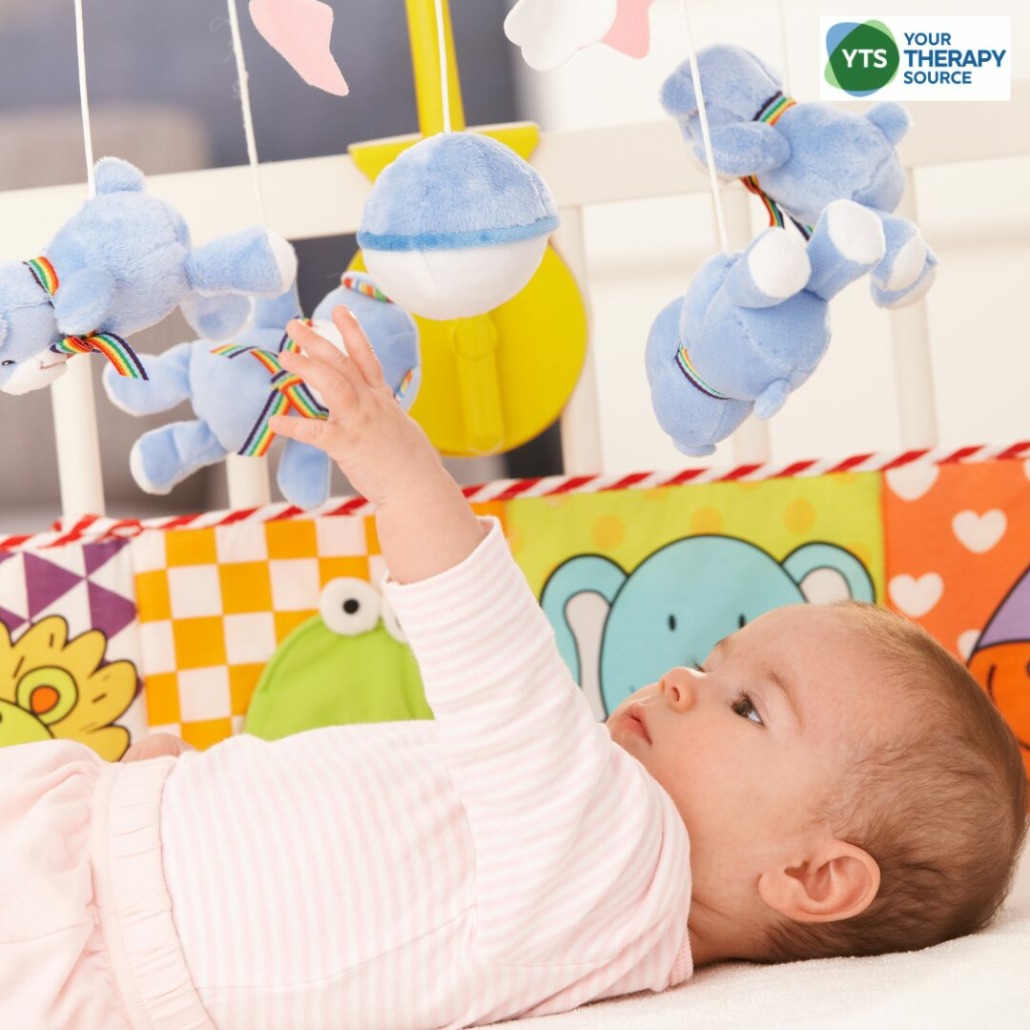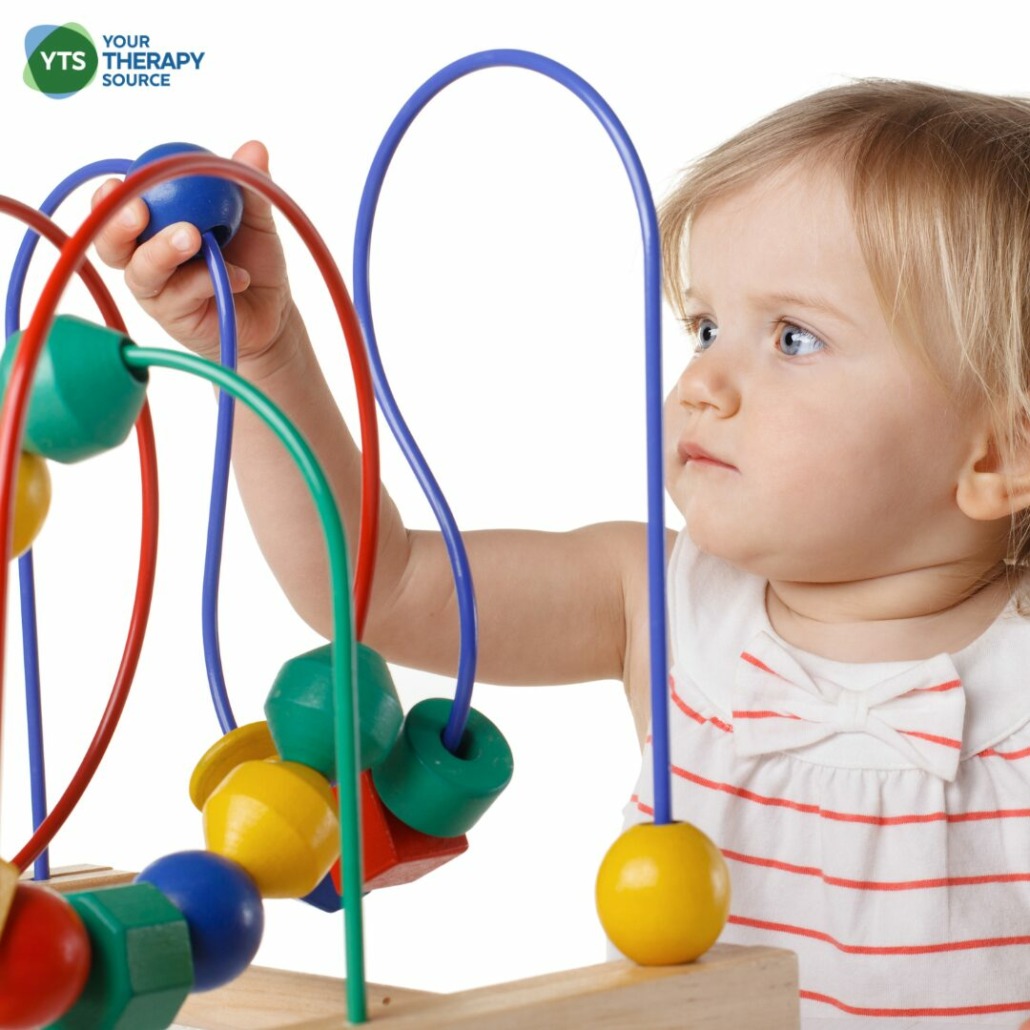Hand Eye Coordination

Hand eye coordination is the synchronized control of eye movement with hand movement, enabling us to perform tasks ranging from simple to complex with precision and accuracy. Learn more about the intricacies of hand eye coordination, how it develops, and effective ways to enhance it across different age groups.
If you would prefer you can listen to this blog post.
What Is Hand Eye Coordination?
Hand-eye coordination is the integrated function of our visual system (the eyes and the brain processes behind vision) and our motor system (the movements of the hands and arms). This coordination is essential for everyday tasks, from picking up utensils to playing sports like basketball. It’s a complex skill involving the reception of visual input and the execution of a corresponding physical action.

Teaching Catching, Throwing and Kicking Skills
Does Hand-Eye Coordination Develop Over Time?
Absolutely! Hand-eye coordination develops from infancy, evolving as children grow. In infancy, simple actions like reaching for small objects are the foundations of this skill. As children grow, their coordination improves, allowing them to engage in more complex activities like playing with legos, catching a tennis ball, or even excelling in video games.
Coordination Activities for Babies
For babies, simple play activities that encourage reaching and grasping can significantly enhance their hand-eye skills. Toys that light up or make sounds can stimulate visual tracking, prompting babies to reach out and touch, thus refining their coordination. For more suggestions, read about fine motor activities for infants.

Coordination Activities for Toddlers
Toddlers benefit from activities that involve sorting shapes, playing with beads, or simple catch-and-throw games. These activities not only entertain but also help in developing fine motor skills and coordination. Here are some helpful tips for activities that toddlers can do even by themselves.
Eye-Hand Coordination Activities for Preschoolers
For preschoolers, activities become more complex. Crafts that involve scissors, drawing, or assembling puzzles are great for improving coordination. Additionally, sports that require visual tracking, like basketball, can be both fun and beneficial. See more ideas about fine motor skills for preschoolers here.

Hand-Eye Coordination Exercises for Students
Older children and students can engage in more structured exercises. Sports, video games requiring precise hand movements, and activities like knitting or playing musical instruments are excellent for enhancing coordination. For more structured exercises, read these ideas for fine motor eye hand coordination activities.
Everyday Examples of Eye Hand Coordination for Students at School and Home
Here are several examples of tasks that student do every day that require hand eye coordination skills:
- Writing and Drawing: Whether it’s taking notes in class or doodling, the act of writing and drawing requires precise hand movements in response to visual cues.
- Using Scissors: Cutting out shapes or following a line with scissors in art projects.
- Typing on a Keyboard: Students use visual cues to find keys and coordinate their fingers to type.
- Playing Catch: Whether during recess or at home, playing catch involves coordinating hand movements to catch and throw a ball.
- Eating with Utensils: Using forks, spoons, or chopsticks requires coordination of sight and hand movements.
- Reading: Moving eyes along lines of text and turning pages in books.
- Playing Musical Instruments: Reading sheet music while coordinating hands and fingers to play an instrument.
- Using a Computer Mouse or Touchscreen: Navigating a computer interface or using a smartphone.
What is Poor Hand-Eye Coordination and What Can We Do About It?
Hand-eye coordination problems can manifest as clumsiness, difficulty in performing tasks requiring fine motor skills, or struggles in sports. This can be due to a range of factors including developmental disorders, lack of practice, or even physical issues like poor eyesight.
Evaluations by an eye doctor, pediatrician, pediatric occupational or physical therapy providers can determine coordination skills and suggest therapy to help improve these skills. Activities tailored to individual needs can significantly enhance coordination.
How to Improve Hand-Eye Coordination
Improving hand-eye coordination can be achieved through a variety of activities, depending on age and interest. Activities range from sports like tennis or basketball, which require precise coordination and timing, to video games that challenge visual tracking and fine motor skills. To improve hand-eye coordination, consistent practice is key, as well as engaging in activities that challenge both the visual and motor systems.
20 Hand Eye Coordination Activities for Various Age Ranges
Here are some basic suggestions to start practicing coordination skills:
- Stacking Blocks (Ages 1-3): Toddlers can improve their coordination by stacking blocks, which also enhances their fine motor skills.
- Finger Painting (Ages 1-4): A fun and creative way to develop coordination through art.
- Catching Soft Balls (Ages 2-5): Playing catch with soft, large balls helps young children coordinate their hand movements with what they see. Adults can roll it or toss it gently to babies and toddlers.
- Puzzle Solving (Ages 2-6): Simple jigsaw puzzles are excellent for developing coordination and problem-solving skills. Try tangrams too for older chidlren.
- Playing with Playdough (Ages 2-5): Molding and shaping playdough is a tactile activity that improves fine motor skills.
- Bead Threading (Ages 3-6): Stringing beads onto a thread is a detailed activity that requires careful coordination.
- Drawing or Coloring Inside the Lines (Ages 3-6): Helps refine hand control and visual tracking.
- Hitting a Beach Ball or Playing Balloon Volleyball (Ages 4-8): Engaging in activities like hitting a beach ball or playing balloon volleyball requires children to coordinate their vision with their movements, enhancing coordination in a fun and active way.
- “I Spy” Book Games (Ages 4-8): Children can enhance their coordination by playing “I Spy” with books, where they have to find and point out specific objects on a page. This activity involves careful visual scanning and precise finger pointing. Try this bigger I Spy picture to hang on the wall.
- Playing Catch with a Friend (Ages 5-10): Playing catch with a friend is an excellent coordination activity. Get more ideas here. No friends around to play with? You can still toss a ball up in the air and play catch with yourself.
- Popping Bubble Wrap (Ages 5-12): The simple act of popping bubble wrap involves coordination of visual focus and finger movements, making it a fun and easy way for children to improve their coordination. It also helps with finger and hand strengthening.
- Playing Video Games (Ages 6+): Certain video games require precise hand movements and quick visual processing.
- Building Models or Legos (Ages 6-12): Involves following visual instructions and precise hand movements.
- Sports like Basketball or Tennis (Ages 7+): Require coordination of hands, eyes, and body movements.
- Tossing and Catching a Smaller Ball (Ages 7+): As skills improve, using a smaller ball increases the challenge. Try bouncing tennis balls against a wall and catch it. Throw a small ball up a set of stairs and catch it. Throw a ball at a target on the wall.
- Darts (Ages 10+): Aiming and throwing darts require precise hand-eye coordination.
- Juggling (Ages 10+): Starts with two objects and can increase as skill improves.
- Archery (Ages 12+): Involves aligning one’s vision with the target and coordinating the hand movement to release the arrow.
- Playing Musical Instruments (Ages 10+): Reading music while coordinating hand movements is challenging but effective.
- Knitting or Crocheting (Teens & Adults): Requires consistent coordination between the eyes and fine hand movements.
Key Takeaways about Hand-Eye Coordination
Hand-eye coordination is a vital skill that develops from early childhood and can be enhanced through various activities suited to different age groups. From the precise finger movements of picking up a small toy to the timing and alignment needed in playing baseball, these activities not only foster coordination but also contribute to overall motor skills development, cognitive growth, and even social interaction skills.
The act of playing catch, while seemingly simple, embodies the essence of hand-eye coordination by synchronizing visual focus with hand movements. Engaging in these activities regularly can significantly improve a child’s hand-eye coordination, setting a strong foundation for more complex tasks and activities in their future. Whether for developmental milestones or just for fun, incorporating these hand-eye coordination activities into playtime offers invaluable benefits for children’s growth and learning.


